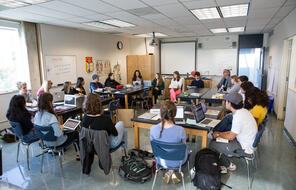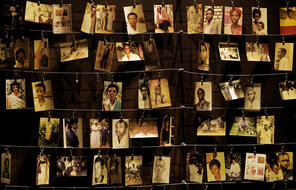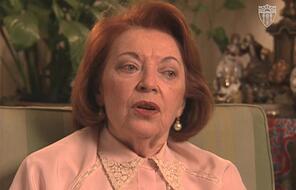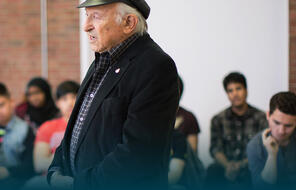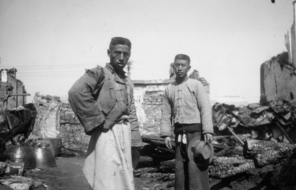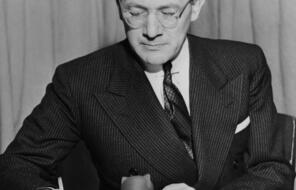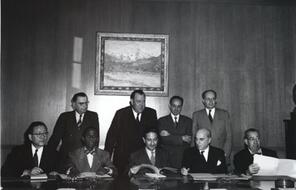Seeking Civil Rights
At a Glance
Language
English — USSubject
- History
- Social Studies
- Genocide
While massacres of Armenians continued throughout the Ottoman Empire, Armenian leaders worked to find a strategy that finally would bring about the protections they had sought for so long. Although other minorities in the Ottoman Empire were able to break free into protected provinces or even separate countries, Armenians were scattered throughout the empire. Hopes for safety and security did not rest as much on independence as they did on real changes in the way they were governed. The two largest Armenian political parties—the Hunchaks and the Armenian Revolutionary Federation—planned direct action in an attempt to educate the world about their situation.
On October 1, 1895, 2,000 Armenians gathered in the Ottoman capital to demand civil rights. Peter Balakian describes how a non-violent protest turned into a slaughter.
As the sultan stalled on the new demands for reform in the Armenian provinces, the frustration among Armenians grew. By the summer of 1895, the Hunchak Party was planning a demonstration in the capital. The mass rally took place at noon on October 1, 1895, as nearly 2,000 Armenians gathered in the Kum Kapu section near the Armenian patriarchate to march to the Sublime Porte. Their goal was to deliver a petition, a “Protest-Demand” which decried the Sasun massacre, the condition of Armenians throughout the empire, and the inaction of the central government.
The petition was—especially given its time and place—an extraordinary statement about civil rights. In clear language the Armenians protested “the systematic persecution to which our people has been subjected, especially during the last few years, a persecution which the Sublime Porte has made a principle of government with the one object of causing Armenians to disappear from their own country.” They protested the “state of siege” under which Armenians were forced to live and the recent massacres at Sasun. Peace and security were essential, the text went on, “to a nation which desires to reach by fair means a position of comparative prosperity, which it has certainly a right to aspire to, and to reach the level of progress and civilization towards which other peoples are advancing.” The list of Armenian demands was broad and basic: fair taxation; guarantees of freedom of conscience; the right of public meetings; equality before the law; protection of life, property, and honor (and this meant the protection of women). The petition also demanded the cessation of mass political arrests and the brutal torture that most often followed them, as well as the right to bear arms for self-defense. The Armenian authors of the petition underscored that the Armenians had waited patiently for the reforms promised them in the Treaty of Berlin in 1878. As one historian put it, it was “the first time in Ottoman history that a non-Muslim, subject minority had dared to confront the central authorities in the very capital of the empire.”
As the rally commenced there was tension all over the city. The Sublime Porte was surrounded by cavalry and police, as the huge crowd made its way into the center of the city and approached the Porte. Copies of the Protest-Demand had already been delivered to various embassies. As the Hunchak leaders were about to deliver the petition at the Porte, they were stopped by Maj. Servet Bey, the adjutant to the minister of police, who ordered them to disband. As the soldiers and the police let loose on the protestors, about twenty people were bludgeoned to death and hundreds were wounded. Major Servet was killed, fights broke out and shots were fired, and a massacre began in the clear daylight on the streets of the capital. Foreigners and European diplomats looked on in horror….
During the first week of October, massacres continued throughout Constantinople day and night. Horrified by what they were witnessing, the foreign diplomats sent a collective message to the Porte asking for an end to the massacres. British ambassador Philip Currie telegraphed the grand vizier [the chief minister of the Ottoman government] to tell him that conditions were deteriorating by the day and that Armenians were being massacred in the city and throughout the suburbs. As the number of dead piled up on the streets and the hospitals filled with wounded, 2,400 Armenians stayed locked up inside their churches throughout the many sections of the city. Finally, on October 10, with assurances from all six foreign embassies, they agreed to come out into the open air. But by then the Constantinople massacre had set off a new wave of violence against Armenians throughout the empire. 1
Connection Questions
- What demands did the Hunchaks make in their petition? What arguments did they make to support their positions?
- Balakian writes that the Hunchak petition was, “given its time and place—an extraordinary statement about civil rights.” What are civil rights? Where do civil rights come from? How are they protected? What is the difference between a civil right and a human right?
- Throughout the nineteenth century, Armenians tried many strategies to bring about change in the Ottoman Empire. Some worked within the system, while others organized into political parties and suggested alternatives. Still others looked for help from abroad. Despite promises, significant change never came. What obstacles did Armenians confront as they sought safety and security? What other strategies were still available to Armenians?
- 1Ottoman Empire. Some worked within the system, while others organized into political parties and suggested alternatives. Still others looked for help from abroad. Despite promises, significant change never came. What obstacles did Armenians confront as they sought safety and security? What other strategies were still available to Armenians?

